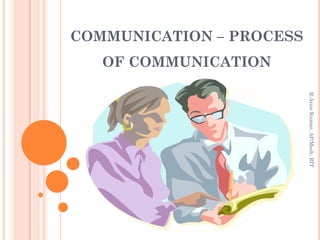The document discusses communication processes and their importance in organizations. It describes key aspects of communication including definitions, functions, types, flow within organizations, elements in the communication process, modes, networks, and barriers. Specifically, it notes communication is the transmission and understanding of information using common symbols. The main functions are control, motivation, emotional expression, and conveying information. Types of communication include interpersonal, organizational, formal, and informal.


















































